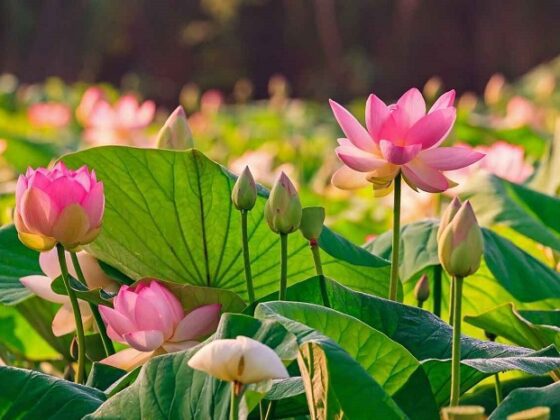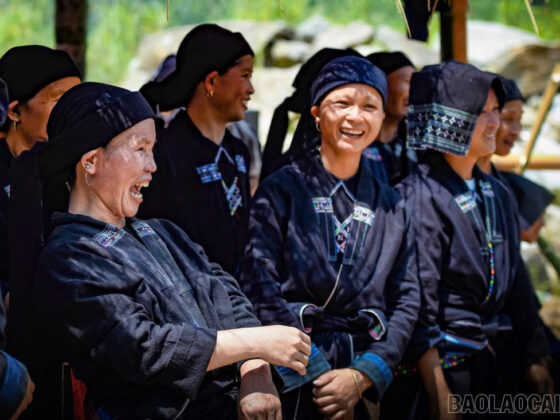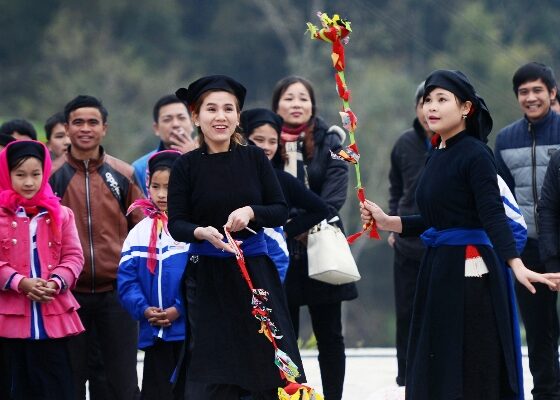Table of Contents Show
✍️ AI is summarizing:
The Ao Dai, Vietnam’s traditional dress, is more than just a garment; it is a beautiful expression of the country’s rich heritage and cultural identity. With its elegant lines and graceful silhouette, the Ao Dai has evolved through the centuries, reflecting the changing tides of Vietnamese history and society.
Read more interesting posts:
- The Art of Vietnamese Pottery: A Timeless Tradition in Bat Trang Village
- Discover Vietnam Like Never Before: A Scenic Train Journey Through Its Heart and Soul
- Vietnam 14 Day Itinerary: The Ultimate Two-Week Adventure from Hanoi to Saigon
The history and origins of the Ao Dai

The story of the Ao Dai begins in 1744 during the Nguyễn Dynasty, a time when Vietnam was divided into two territories: the Inner Land (Đàng Trong) and the Outer Land (Đàng Ngoài). To distinguish his people, Lord Nguyễn Phúc Khoát mandated a front-buttoned gown paired with trousers, known as the áo ngũ thân. This five-part dress laid the groundwork for what we now recognize as the modern Ao Dai.
Originally, the garment was worn by both men and women, made from luxurious silks adorned with intricate details that denoted social status. As time passed, this traditional dress began to evolve, especially in the 1930s when artist Le Mur Nguyễn Cát Tường simplified the design into two parts. The front flap was extended to reach the ankles, and the overall fit became more tailored. This modern adaptation initially met with some resistance, but once Le Mur designed a collection for Queen Nam Phương, urban women quickly embraced the style.
Understanding the evolving purpose of the Ao Dai

After the establishment of the Democratic Republic of Vietnam in the late 1940s, Hồ Chí Minh noted that the Ao Dai was not practical for daily work in the fields or factories. As a result, it transitioned from everyday wear to a garment reserved for special occasions and professional appearances. Today, many Vietnamese high school girls wear this at least once a week, creating a picturesque image of students cycling in white this is to school, which has inspired countless songs, poems, and artworks.
How the modern Ao Dai embraces new styles and interpretations

In contemporary Vietnam, the Ao Dai continues to captivate. Modern designers are reimagining this classic garment with innovative styles, such as boat necks and cropped lengths, making it adaptable for various occasions. Knee-length variations are particularly popular for ease of movement, especially for those riding motorcycles or bicycles.
This dress is often worn for special events like weddings, where both brides and grooms showcase elaborate designs. During Tết (Lunar New Year), you’ll see the dress in all its splendor, as women don vibrant colors to visit family and pay respects at temples.
The meaning and symbolism behind Ao Dai colors

Choosing an Ao Dai is not just about style; each color carries its own meaning. Gold, once reserved for royalty, symbolizes wealth, while red represents luck and prosperity, especially during Tết. White is associated with purity and commonly worn by high school students, and black is typically reserved for mourning. Women often select colors based on their birth elements—metal, wood, water, fire, or earth—adding a personal touch to their attire.
How to get a custom-made Ao Dai in Vietnam

Wearing an Ao Dai is a way to show respect and celebrate Vietnamese culture. For those interested in creating a personalized version, shops in Hanoi’s Old Quarter and Hội An offer an array of ready-to-wear options. Tailors in Hội An can craft a custom piece within days, allowing you to select your preferred style and colors. A visit to Vạn Phúc silk village, just outside Hanoi, provides a unique opportunity to shop for high-quality silk and even witness the silk-making process.
Conclusion
The Ao Dai is more than just clothing; it is a profound symbol of Vietnam’s identity and heritage. Each time someone wears this elegant attire, they connect with the past and celebrate the beauty of Vietnamese culture. Whether you’re wandering the streets of Hanoi or attending a wedding, the Ao Dai remains a timeless expression of grace and tradition, capturing the hearts of both young and old alike.
For more travel inspiration and to connect with fellow adventurers, join our community on the ExoTrails Vietnam Facebook group and follow the ExoTrails Fanpage!
FAQs
What is an Ao Dai?
This is the traditional dress of Vietnam, consisting of a long, tight-fitting tunic with side slits worn over wide-legged pants. It is celebrated for its elegance and is a powerful symbol of Vietnamese culture.
Why is the Ao Dai a symbol of Vietnam?
The Ao Dai is a symbol of Vietnam because it embodies the nation’s cultural heritage, history, and sense of identity. Its graceful form and evolution over centuries reflect the spirit and resilience of the Vietnamese people.
What is the history behind the Ao Dai?
The traditional dress’s history traces back to the 18th-century áo ngũ thân of the Nguyễn Dynasty. It was significantly modernized in the 1930s and has since evolved from daily wear to a cherished garment for special occasions.
What do the different colors of the Ao Dai represent?
Colors this dress carry deep meaning: red signifies luck, white represents purity, and gold symbolizes wealth. Many people also choose colors based on their personal Feng Shui elements.
Where can I buy a real Ao Dai in Vietnam?
You can buy authentic Ao Dai at tailor shops in major cities like Hanoi, Ho Chi Minh City, and especially Hoi An. Hoi An is renowned for its skilled tailors who can create custom pieces quickly.
How long does it take to tailor an Ao Dai in Hoi An?
Depending on the complexity and the tailor’s schedule, a custom-made Ao Dai in Hoi An can typically be completed in 1 to 3 days.












